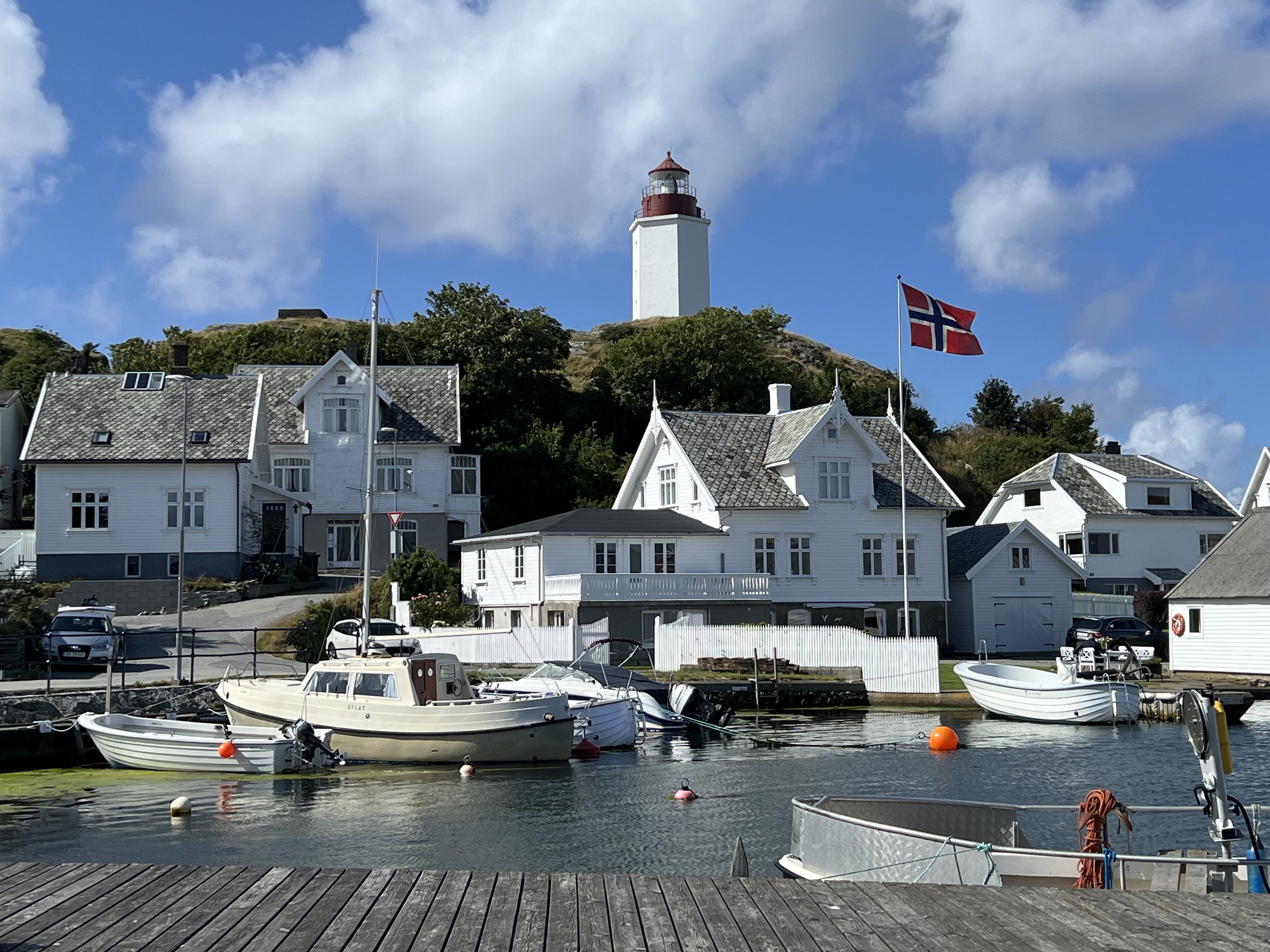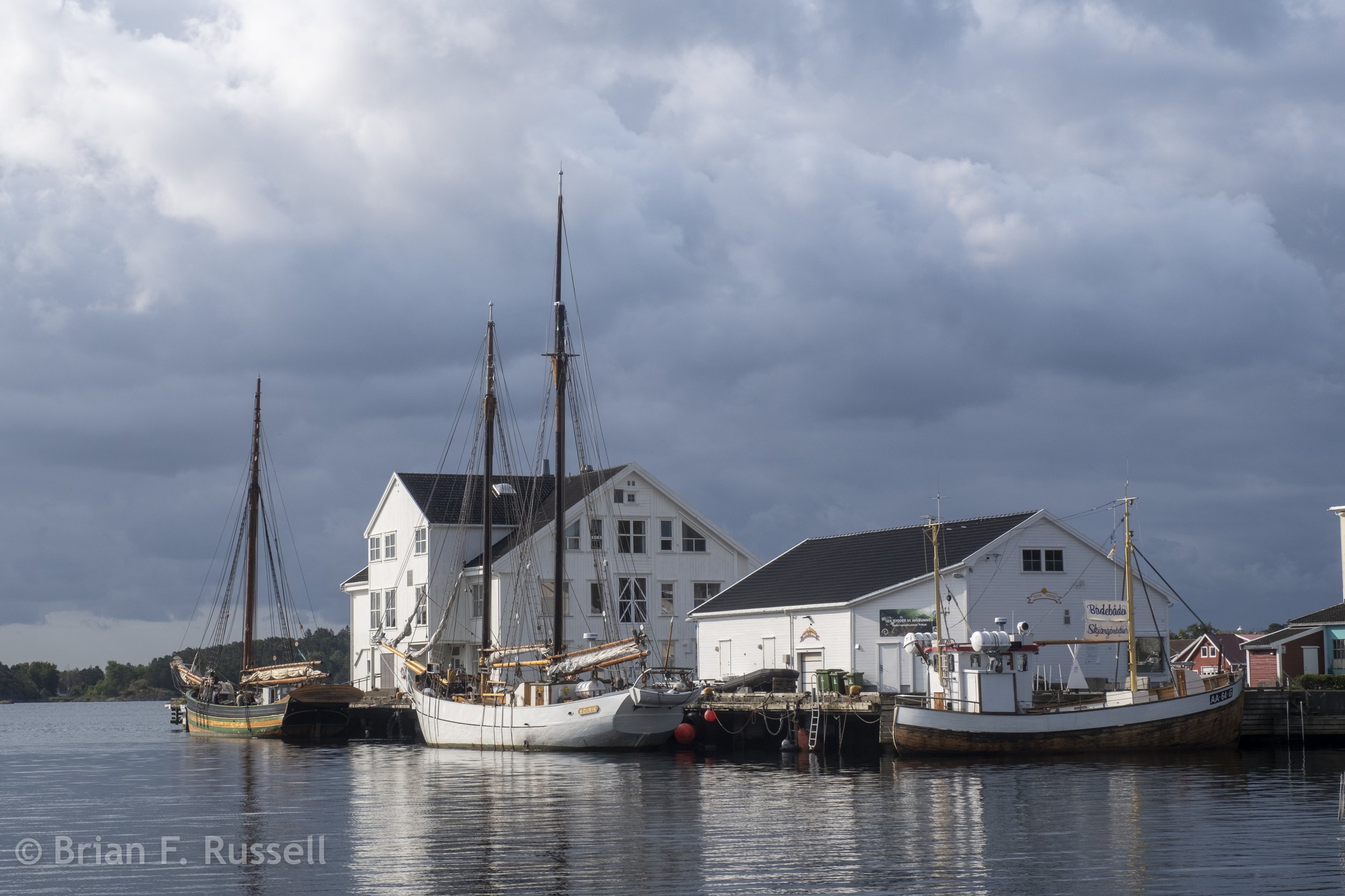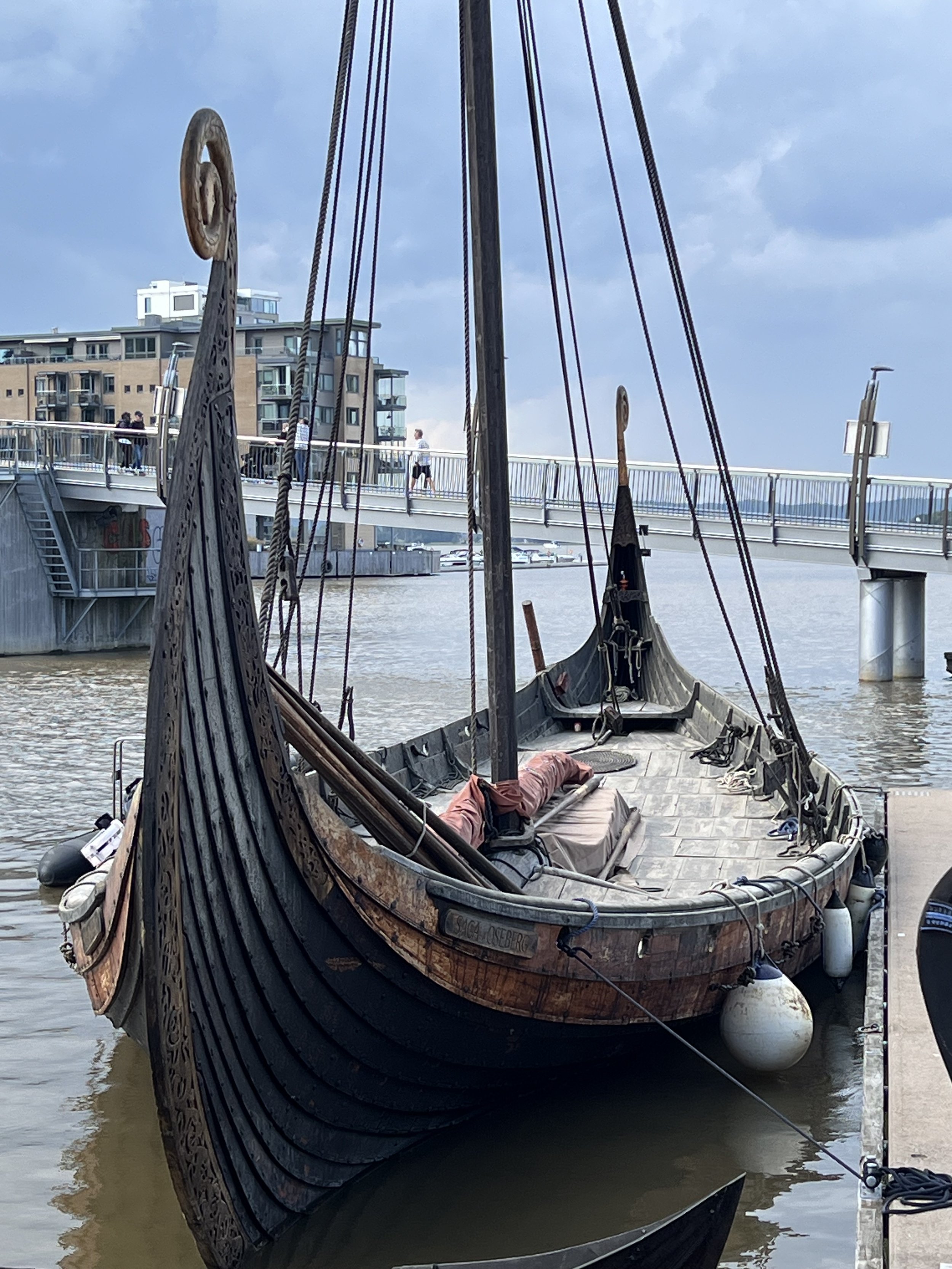The gentler side of Norway.
We arrive in Haugesund, just 5 miles south of Røvaer, where we departed Norway two years ago, ready to pick up our exploration of the amazing Norwegian coastline. We tie up to the town wharf and celebrate a smooth and fast North Sea crossing with a dram of our Scottish Whisky. It was Saturday and so quiet. A few people walking around, a couple of cars drove by. The rather cool and overcast weather maybe dissuading holidaymakers despite it being the first weekend in August. In the afternoon we located the police station and checked in to Norway.
The oil platform being repaired in the harbor towered over the old waterfront warehouses. The statue of Haugesund’s (grand) daughter, Marilyn Monroe was an unexpected find. Her father, a local baker, emigrated to America.
It is so interesting how architecture varies from culture to culture. We are just 300 miles across the North Sea yet the solid masonry of Scotland is replaced by much more delicate wooden sided older buildings, varied rooflines and lovely slate tiles. There are a lot of very modern houses too, mostly very well done, in harmony with the environment. I enjoy spotting them with binoculars as we sail by.
The journey south started the following day. We anchored overnight in a protected spot, weaving our way in between rocky islets. The next day we sailed to Stavanger, the small town that boomed with the development of North Sea oil. We visited the Norsk Oljemuseum, which was very interesting, detailing not only the discovery and exploitation of the fields, but the development of equipment and drilling methods.
Old Stavanger, with its narrow cobbled streets, wraps around the downtown harbor, or Vagen. We however opted to stay at a quieter marina across the bridge, away from the noise and wakes of tour boats.
We had just arrived when we got a message from Kjetil and Marit, sailors we had met on the dock in northern Norway over 2 years ago. We had sailed right by their home in Stavanger and they had been watching out for us. We had a wonderful evening, discussing cruising plans and boats. All good stuff, thank you both so much for your hospitality.
The following day we left under low clouds and scattered showers and headed inland with considerable faith in the forecast, to see the famous Lysefjord and Pulpit Rock. As we approached the sun shone through the clouds and we enjoyed the vistas down the fjord and the massive cliffs towering above.
Heading toward Lysefjord.
For scale search for the sailboat at the base of the sheer rock face.
This was really the last of the large dramatic fjords, from now on the landscape becomes more mellow, worn down by glacial activity eons past. After leaving Lysefjord we headed to offshore islands to wait for weather to take us south. The wind does not cooperate, it is from the south, but Kvitsøy could not have been a more charming place to be waiting.
We spend a pleasant few days here, meeting new friends Jennie and Olof, and together we have a picnic in the hikers day hut. It is free and open for all to use, complete with wood burning stove, knitted slippers and sheepskin rugs.
After saying farewell to our friends we set sail south, initially planning to get around the southern cape of Norway in an overnight passage. However the wind was a lot lighter than predicted and the seas still sloppy so it was slow going. We ended up stopping for the night, and continuing the following day, rounding the “notorious Lindesnes headland with a ferocious reputation” under blue skies and with the engine on.
Norway’s first lighthouse was built on Lindesnes in 1655; the current one is also the site of a Lighthouse museum. Unfortunately we could not stop, but continued on to a beautiful anchorage, sheltered among rocky islands. We were now on the south coast and about to start the Blindleia., the “Blind Alley”, a stretch of the coast approximately 30 miles long. Here the boat weaves among rocky islets, along channels that at some points were only 10m wide, taking tight twisting paths that, had we not been sent the route by our friend Kjetil, we would never have attempted. However having been assured that it was possible we enjoyed a couple of days motoring through.
Channel through the rocks? Surely not??
The holiday homes here are numerous and more traditional in style. We were wondering if the “new” oil money funded the modern architecture we saw on the west coast, while this coastline has older family homes, handed down through generations. Either way, the wealth of Norway is obvious just from the sheer number perched on every rocky outcrop.
Two days of that was enough! So stressful, identifying the route between the skerries, wondering how accurate the charts really were. We stopped in a lovely town, Grimstad, to stock up on fresh supplies and to stretch our legs.
Grimstad waterfront.
Helen discovered a wonderful store selling wool and other sundries, she was in Nirvana and got supplies for a few more projects.
The following day we sailed 3 miles offshore, just to have a little space between us and the rocks. Our next anchorage was at Tromlingene, an inlet sheltered from the ocean by an island that was created from a glacial terminal moraine. Similar islands stretch along up the coast from here.
The weather is extremely changeable. From no wind for sailing, to high winds where we do not really want to sail. It is difficult, but in hops and jumps, we move along the coast. At one anchorage a combination of the Blue Moon high tide and wind driven water made the dock and picnic area untenable.
Finally we arrive in Tønsberg, a town where we could leave the boat safely secured and catch a train to visit Oslo for a day. It turns out Tønsberg is interesting in its own right, claiming to be Norways first town, founded by King Harald Harfågre (Fair Hair) in the 9th century.
This area was the center of boatbuilding in Viking times, with more archeological finds of that era here than any other region in Norway. The two ships in the Viking Museum in Oslo (which unfortunately is closed for a multi-year renovation) were found in this area. We discovered that replicas were being built along the waterfront here, with traditional techniques and hand tools. We had fun exploring a real Viking ship.
A completed replica of a Viking ship.
The next day we took the train to Oslo for a day of culture. We enjoyed the National Gallery with an exhibit of Rothko works and dresses worn by the recent Queens of Norway.
Then it was off to the Fram museum and Kon-Tiki museum. The Fram museum houses the boat that Nansen and Amundsen sailed in Arctic and Antarctic adventures. The reinforced bow was impressive: 3 layers of oak to resist the pack ice as they overwintered in the Arctic. Also a rebuilt Gjøa, the boat that Amundsen sailed through the Northwest passage for the first time in 1906.
Next door to the Fram museum was the Kon-Tiki museum with both the original balsa wood raft that crossed the Pacific from Peru, but also Thor Heyerdahl’s later Ra 2 reed boat that traveled across the Atlantic from Africa to Barbados in the Caribbean.
After all that it was time to head outside and explore Oslo. We enjoyed the modern buildings and lack of any skyscrapers, also the abundance of public art which made walking around fun. The floating saunas were not in high demand on this overcast afternoon.
The Vigeland Park, with its over-the-top homage to the Norwegian sculpture Gustav Vigeland, was fascinating in a weird and unsettling way. The bland, expressionless, and contorted figures and the sheer number of them were fascinating. Apparently he struck a deal with Oslo City wherein they would get the rights to all his works in exchange for all his living expenses. He was certainly very prolific, and they kept everything he made.
And just like that, we felt it was time to move on. August was coming to an end and we still had plenty of places to explore. We untied the lines and set our bow south, on to Sweden and another chapter.






































































































